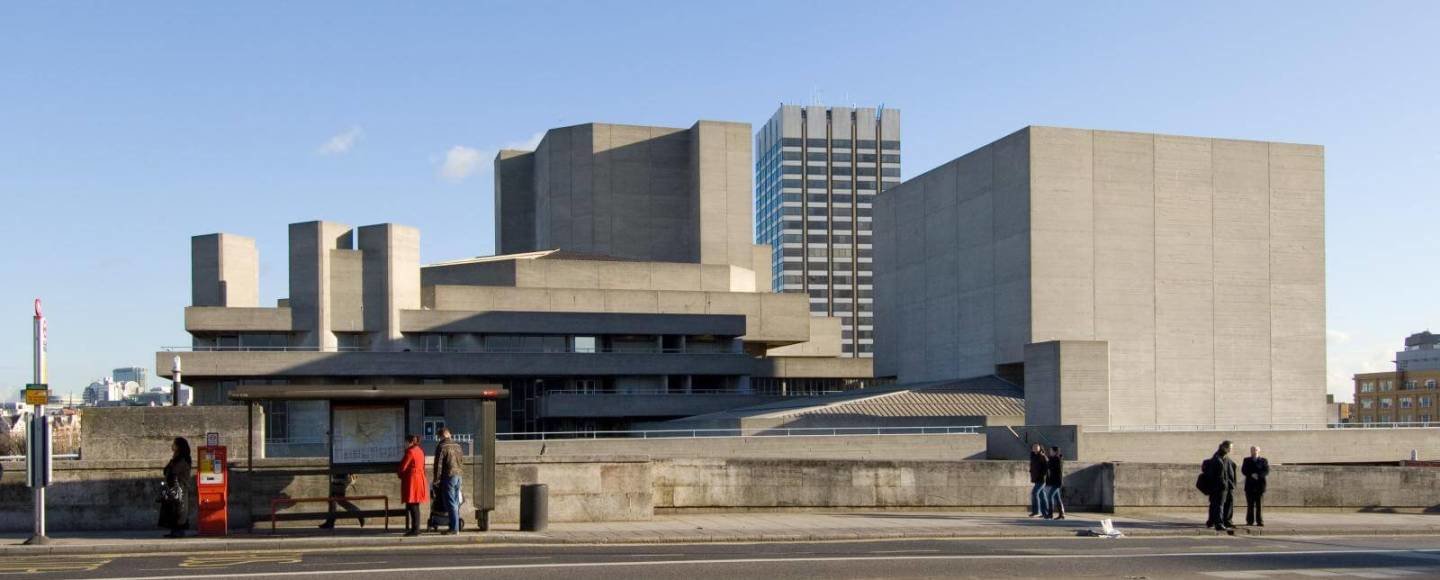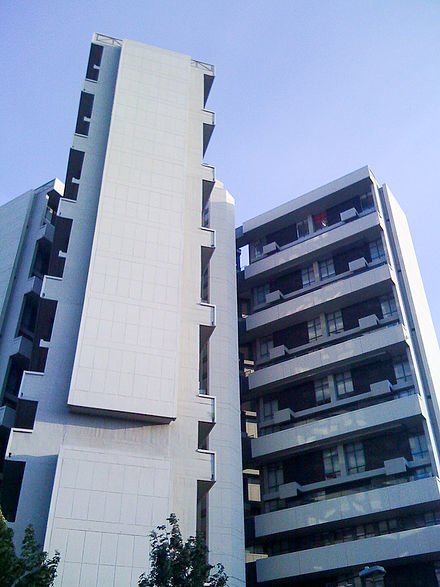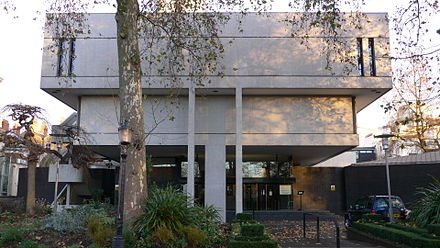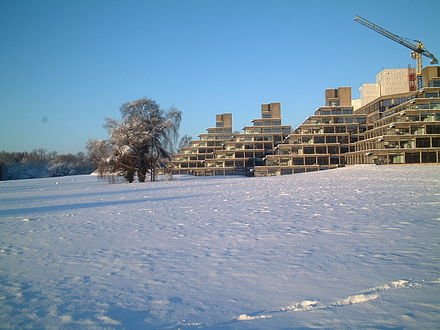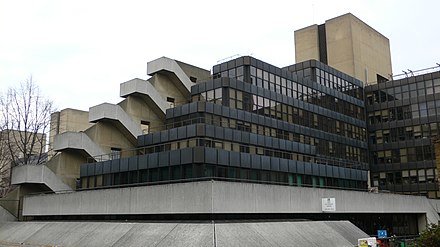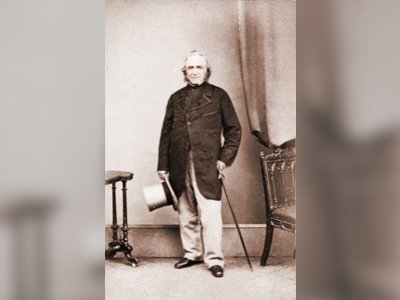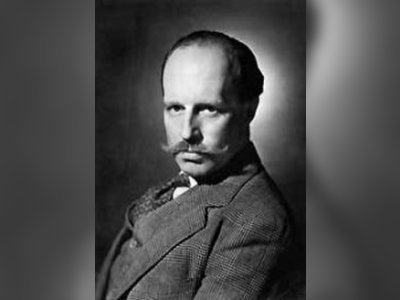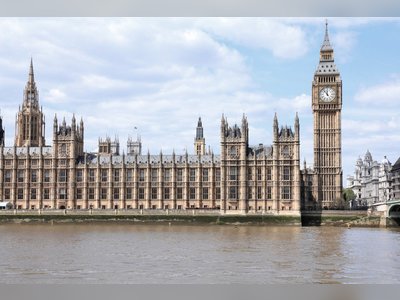British Heritage
Remember, Cherish, Learn.
beta
Denys Lasdun
Constructing the Brutalist Aesthetic in British Architecture.
The fabric of British architectural heritage has been significantly shaped by the avant-garde designs of Sir Denys Louis Lasdun. Born on 8th September 1914 in Kensington, London, and passing away on 11th January 2001, Lasdun made a lasting impact on Britain's architectural landscape. Best known for his Brutalist designs, notably the Royal National Theatre on London's South Bank, Lasdun's works consistently challenged prevailing architectural norms. His novel approaches and Brutalist influence significantly enriched the British architectural heritage.
Denys Lasdun's educational journey in architecture began at the Architectural Association School of Architecture in London. Here, he served as a junior under the practice of Wells Coates. Throughout his career, Lasdun drew inspiration from various architectural luminaries, ranging from Modernist icons like Le Corbusier and Ludwig Mies van der Rohe, to more classical influences such as Nicholas Hawksmoor. His multifaceted architectural style was cultivated through these diverse influences, ultimately paving the way for his distinct Brutalist idiom.
Lasdun's career saw him working with numerous collaborators, most notably with Berthold Lubetkin's Tecton practice before and after his Second World War army service. This period saw Lasdun complete a private house in Paddington in Le Corbusier's style and work with Lindsay Drake on the Hallfield Estate, laying the foundations for his mature style marked by bare concrete, angularity, and human scale.
During the 1950s, Lasdun partnered with Jane Drew, Maxwell Fry, and Lindsay Drake in Fry, Drew, Drake, and Lasdun. His originality came to the fore in his 'cluster blocks' in Bethnal Green, a pioneering response to criticisms of post-war development for its isolating environments. These cluster blocks grouped flats around a central tower, promoting a sense of community. His breakthrough masterpiece, the Royal College of Physicians building in Regent's Park, completed in 1964, combined modern concrete technology, highly expressive structural methods, and implicit references to high modernists, thus developing his unique architectural idiom.
Lasdun's iconic style, characterized by cubic towers, bare concrete, and jutting foyers, found an appreciative audience in academia. Notably, his designs for Fitzwilliam College, Cambridge, the University of East Anglia, and the University of London's Institute of Education were highly influential. His design for the Royal National Theatre on London's South Bank courted both controversy and acclaim, with Prince Charles likening it to a nuclear power station while poet laureate John Betjeman praised its design. Lasdun continued his architectural contributions by designing the neighbouring IBM headquarters and the European Investment Bank in Luxembourg.
Despite the contentious nature of some of his works, Lasdun's architectural contributions were recognized when he was awarded the RIBA Royal Gold Medal in 1977. His designs are preserved in the RIBA Drawings & Archives Collections, with most of his surviving buildings having been listed, testifying to their significance in the architectural canon.
Apart from his profound architectural legacy, Lasdun also had a familial connection to the world of arts through his grandfather, Louis Abrahams, a significant patron of artists associated with the Heidelberg School art movement, also known as Australian Impressionism. Lasdun inherited his grandfather's art collection, thereby fostering a connection to the broader world of arts beyond architecture.
His son, James Lasdun, pursued a literary career, adding yet another facet to the Lasdun family's contributions to the arts.
Lasdun's life and works continue to echo through the architectural world. His innovative designs and Brutalist aesthetic helped to redefine British architectural landscape, thereby leaving a lasting legacy and a significant contribution to the country's heritage.
Formative Years and Influences
Denys Lasdun's educational journey in architecture began at the Architectural Association School of Architecture in London. Here, he served as a junior under the practice of Wells Coates. Throughout his career, Lasdun drew inspiration from various architectural luminaries, ranging from Modernist icons like Le Corbusier and Ludwig Mies van der Rohe, to more classical influences such as Nicholas Hawksmoor. His multifaceted architectural style was cultivated through these diverse influences, ultimately paving the way for his distinct Brutalist idiom.
Architectural Contributions
Lasdun's career saw him working with numerous collaborators, most notably with Berthold Lubetkin's Tecton practice before and after his Second World War army service. This period saw Lasdun complete a private house in Paddington in Le Corbusier's style and work with Lindsay Drake on the Hallfield Estate, laying the foundations for his mature style marked by bare concrete, angularity, and human scale.
During the 1950s, Lasdun partnered with Jane Drew, Maxwell Fry, and Lindsay Drake in Fry, Drew, Drake, and Lasdun. His originality came to the fore in his 'cluster blocks' in Bethnal Green, a pioneering response to criticisms of post-war development for its isolating environments. These cluster blocks grouped flats around a central tower, promoting a sense of community. His breakthrough masterpiece, the Royal College of Physicians building in Regent's Park, completed in 1964, combined modern concrete technology, highly expressive structural methods, and implicit references to high modernists, thus developing his unique architectural idiom.
Legacy and Criticism
Lasdun's iconic style, characterized by cubic towers, bare concrete, and jutting foyers, found an appreciative audience in academia. Notably, his designs for Fitzwilliam College, Cambridge, the University of East Anglia, and the University of London's Institute of Education were highly influential. His design for the Royal National Theatre on London's South Bank courted both controversy and acclaim, with Prince Charles likening it to a nuclear power station while poet laureate John Betjeman praised its design. Lasdun continued his architectural contributions by designing the neighbouring IBM headquarters and the European Investment Bank in Luxembourg.
Despite the contentious nature of some of his works, Lasdun's architectural contributions were recognized when he was awarded the RIBA Royal Gold Medal in 1977. His designs are preserved in the RIBA Drawings & Archives Collections, with most of his surviving buildings having been listed, testifying to their significance in the architectural canon.
Personal Life and Death
Apart from his profound architectural legacy, Lasdun also had a familial connection to the world of arts through his grandfather, Louis Abrahams, a significant patron of artists associated with the Heidelberg School art movement, also known as Australian Impressionism. Lasdun inherited his grandfather's art collection, thereby fostering a connection to the broader world of arts beyond architecture.
His son, James Lasdun, pursued a literary career, adding yet another facet to the Lasdun family's contributions to the arts.
Lasdun's life and works continue to echo through the architectural world. His innovative designs and Brutalist aesthetic helped to redefine British architectural landscape, thereby leaving a lasting legacy and a significant contribution to the country's heritage.
- Denys Lasdunen.wikipedia.org
